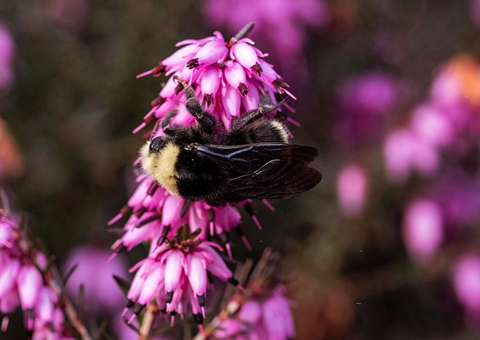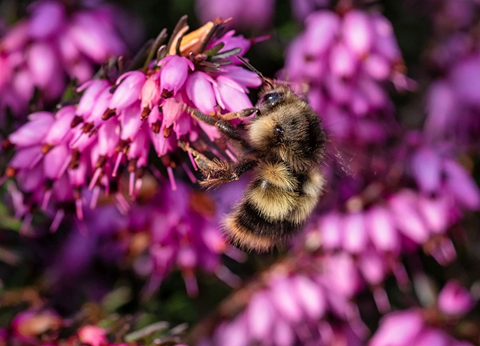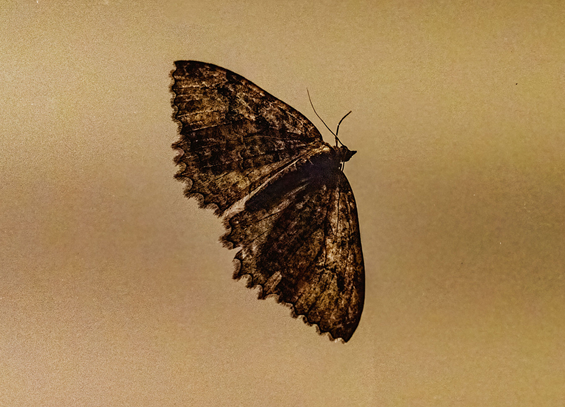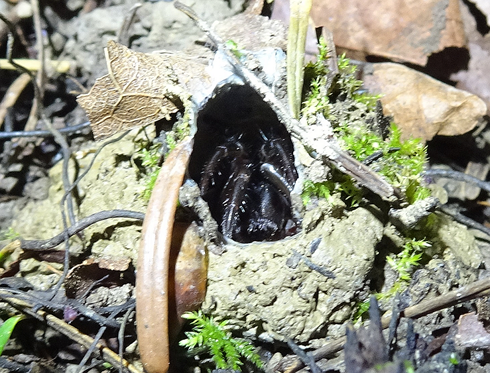March 8
2021 March 8 morning
Gordon Hart (Highlands) writes that on March 5 he saw his first butterfly of the year – a Cabbage White trying to get out of his greenhouse. This is the second Cabbage White we have heard of this year (see also February 9) emerging a little prematurely from inside a building. Later on the same day the spring-flowering heather had attracted two or three species of bumble bees. One is a Yellow-faced Bee Bombus vosnesenskii . The other two are possibly colour varieties of the Black-tailed Bee B. melanopygus. We’d be happy if some knowledgeable viewer would confirm (or otherwise!) this.


Bombus vosnesenskii (Hym.: Apidae) Gordon Hart


Probably Bombus melanopygus (Hym.: Apidae) Gordon Hart


Possibly Bombus melanopygus (Hym.: Apidae) Gordon Hart
Also on March 5, Gordon photographed an American Tissue Moth Triphosa haesitata.


Triphosa haesitata (Lep.: Geometridae) Gordon Hart
Ian Cooper writes: As a further confirmation that Spring has truly arrived, for the first time since last autumn, the sealed off burrow entrance of the largest Antrodiaetus pacificus Trapdoor spider known to inhabit the 9km area of the Galloping Goose Trail was wide open and the resident spider was plainly visible at its open doorway. Amazing! The attached photo is one of multiple attempts to get a close up shot of it. These spiders can live up to be 20 years or so, according to Claudia Copley, and the size of this seasoned arachnid makes it clearly one of the 9km area’s longest-lived resident spiders. I was very happy to see it was still alive and active!
Note the mass of yellowish mud the spider has used to build up and strengthen its burrow entranceway. A veritable fortress! When it retreated into the depths of its lair in response to the approach of my light and camera, I was able to peer into the burrow and see it extended quite a way back into the embankment. Wow!
Jeremy Tatum writes that, as an astronomer, he can’t quite agree that Spring has yet arrived. Some would say that Spring has arrived when the first Sara Orangetip is seen. I insist that spring has not arrived until the Right Ascension and Declination of the Sun are zero. We have almost a fortnight to wait yet.


Trapdoor Spider Antrodiaetus pacificus (Ara. (Myg.): Antrodiaetidae) Ian Cooper
